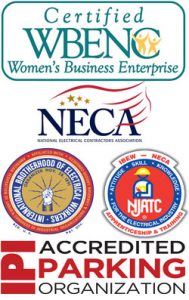The vast majority of the time I am usually able to proclaim a security bollard (or wedge barrier) the winner in a contest between it and a car or truck. (Witness last week’s article – “Videos Show Trucks Ramming Counter Terrorism Barriers” ). But such was not the case at the BMO Harris Bank on Saturday in Fox River Grove, at least according to the Arlington Cardinal. It reported “No Injuries as Bollard Fails to Protect BMO Harris Bank from Car Crash into Building at US 14 and Route 22 in Fox River Grove”. The white Regal Buick SUV pictured above had slammed through the wall of the bank and was almost entirely inside when it came to a stop. Luckily no one was injured. You can clearly see the yellow, nearly vertical, security bollard to the right of the fireman on his knees behind the vehicle. But is this the entire story? Or is the paper’s headline as misleading as ours is? Let me first say that all bollards are not the same. Some are designed to prevent low speed, or low impact crashes such as cars jumping a curb when moving forward instead of in reverse. Or as we have shown on this blog many times before, bollards used in parking control applications where they protect exposed vital equipment. These are not crash rated bollards installed to thwart larger, heavier vehicles and trucks. The article does take the stand that it “appeared to be improperly installed with not enough of the post below ground.” It goes on to describe a proper installation including concrete foundation. It also raised questions about local building inspectors and building codes. They also share a link to a page on ConcreteConstruction’s web site on Creating A Bollard. I disagree with the assumptions and where the article leads readers. I doubt whether this bollard was intended to prevent a low-speed event or a crash and grab (or ram) raid. I suspect the correct answer might be – neither. I went further down the article and also invite you to scroll down and view a slew of additional pictures, including various Google Maps and images. One image from Google maps struck me. It shows a ‘before’ view of the front of the bank. There we can see two short yellow pillars each anchoring a handicap parking sign, one on either side of the entrance. These bollards may have merely been concrete anchors for those signs and not even true security bollards. It seems to me that the obvious path for a real ram raid would have been through the front entry doors rather than through a brick wall. That’s the place where crash rated bollards might have been installed. If anything, the bollards perhaps were only installed to hold the signs and possibly prevent a low-speed impact from a handicapped driver. Image courtesy of Arlingtoncardinal.com (PHOTO CREDIT: Jimmy Bolf). Please call ECI at 847.949.0134 when you need a professional opinion about installing protective security bollards for your location. Or click below for direct contact information.
Proud Member of These Fine Organizations

Main Categories or Subjects – Search for Related Articles
- ADA Gates
- Automated Slide Gates
- Automatic Barrier Gates
- Automatic Swing Gates
- Cantilevered Slide Gates
- Control System Integrators
- Counter Terrorism
- Crash and Grab
- Electrical Contractors
- Entrapment Zones
- Guard Booth
- High Security Fencing
- Low Clearance Alarm Bar
- Low Speed Vehicle Crashes
- Ornamental Fencing
- Parking Access and Revenue Control Systems
- Perimeter Security Vehicle Protection
- Perimeter Vehicle Control
- Radio Frequency Identification (RFID)
- Residential Gated Community
- Security Bollards
- Slide Gate Operators
- Swing Gate Operators
- Telephone Access Control
- Turnkey Vehicle Access Control Project
- Turnstile Barrier Gate
- Vehicle Access Control
- Vehicle Detector Loops
- Vehicle Gate Maintenance
- Vehicle Traffic Control Spikes
- Vertical Pivot Gates
- Vertical Pivot Lift Gates
- Wedge Vehicle Barriers
Sub-Categories
Access Control
Access Control Reader
Anti-Ram Barriers
Anti Terrorism
Automated Barrier Gates
Automatic Swing Gates
Automatic Wedge Barriers
AVI
Ballistic Resistant
Bollard
Concrete Pads
Conduit Work
ECI to the Rescue
Entrapment Zones
Gate Operators
Guard Booths
Guard Shelter
Intercom
Level 4 Ballistic Rating
Low Speed Vehicle Crashes
Maintenance and Service
Manual Controls
Optical Turnstile Barrier
Parking Lot Entry Terminals
Parking Lot Exit Terminals
Parking Lot Pay on Foot Terminals
Pay on Foot Terminals
Pedestrian Exit Gates
Pedestrian Gates
Photoelectric Beams
Ram Raids
Residential Gated Community
RFID
Safety Edge Guards
Security
Shelters
Slide Gate Operator
Slide Gates
Swing Gates
Tailgating
Telephone Entry System
Turnkey Installations
Vehicle Detector Loops
Vehicle Revenue Control
Vehicle Traffic Control Spikes

